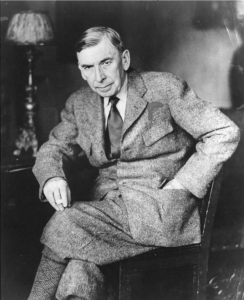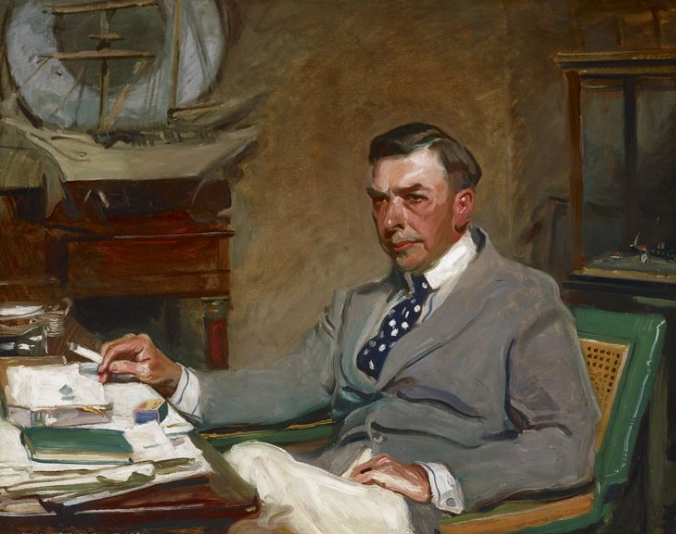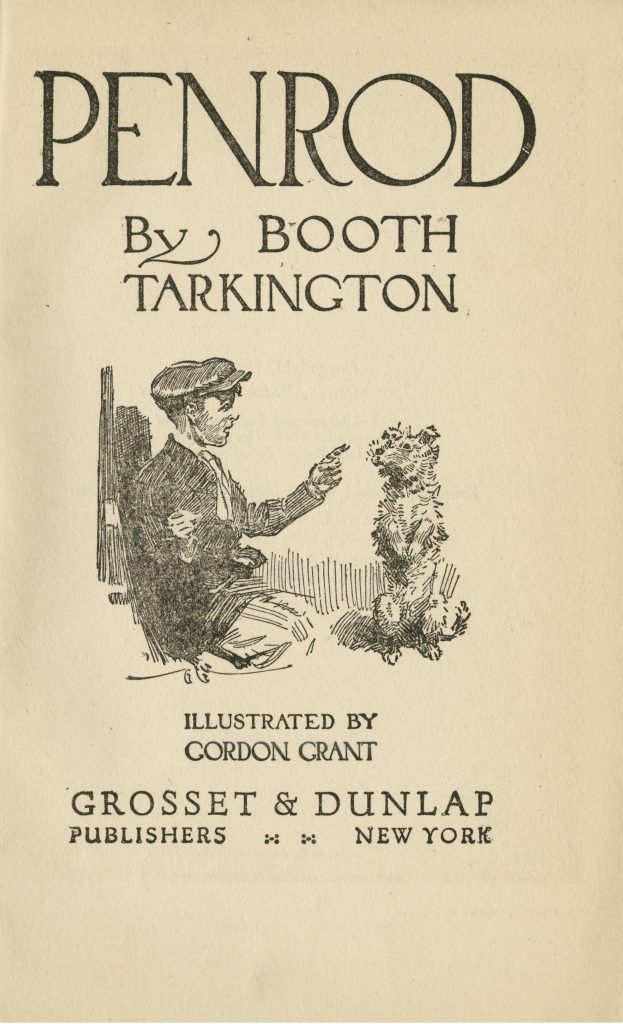
Photo info …
Credit: W. H. Bass Photo Collection CollectionView Source
(July 29, 1869-May 19, 1946). A novelist who was only one of four writers to win the Pulitzer Prize for fiction twice, Booth Tarkington was born in Indianapolis, the son of John S. Tarkington, a circuit court judge, and Elizabeth Booth Tarkington. Along with , George Ade, and helped to create a in Indiana.

Best remembered for his wholesome, adventure-filled young adult fiction, Tarkington is also still admired by critics for the well-crafted plots, realistic portrayals of midwestern life during the early years of the 20th century, and sheer entertainment value in his works.
Like his juvenile hero, Penrod, the young Tarkington adored the theater and was drawn to mischief. Tarkington starred in his own elaborate melodrama based on the life of Jesse James while still in high school and was sent off to a New England boarding school after playing truant for over nine weeks.

Tarkington returned to Indiana to start college at Purdue University but transferred after two years to Princeton University, where he distinguished himself in dramatics, edited three major campus publications, and founded the Princeton Triangle theatrical group. “Tark,” as he was called, was as well-known for his late hours and his spectacular capacity for liquor as he was for his literary pursuits.
After leaving Princeton, Tarkington returned to Indiana planning for a career in writing, but for the next six years, all he earned were rejection slips. His pseudonyms included John Corburton, Cecil Woodford, and Milton Kilgalen.

In 1898 Tarkington’s older sister, Haute, staged a sit-in at the offices of publisher S. S. McClure, vowing not to leave until the editor agreed to read her brother’s manuscript for (1899). McClure accepted the novel for publication as a book and serialization in . It was an instant success, propelling Tarkington into the national limelight. At home, the book was less well-received. Some Hoosiers felt that Tarkington was making fun of them.
As his national reputation grew, Indianapolis adopted him as a favorite son. His second book, (1900), was so successful that in 1902 he was able to win a seat in the Indiana House of Representatives without actively campaigning. His term of office was cut short by typhoid fever.
That same year, Tarkington married Laurel Louisa Fletcher, the daughter of a prominent local banker. The marriage was not a happy one. Their only child, Laurel, suffered from an extreme form of schizophrenia and died of pneumonia at the age of 16. His daughter’s illness aggravated Tarkington’s alcoholism, causing his wife to sue for divorce in 1911. A year later, Tarkington married Susanah Robinson, following a pledge to give up drinking and devote himself totally to writing.
During this period, Tarkington teamed with fellow author and playwright Harry Leon Wilson. Together they penned a string of moderately successful plays, and Tarkington’s contribution to the American theater ranks him as an important playwright of the early 20th century.
His 1913 novel marked an important turning point in Tarkington’s career. Less successful than some of his earlier works, it foreshadowed the vivid characterization and style of his later young adult novels. (1914) and (1916) were both successes. Critics have acclaimed Tarkington’s realistic depictions of childhood experiences, often comparing them to Mark Twain’s .
Tarkington broke new ground with the publication of his trilogy. These three novels— (1915), (1918), and (1924)—used a fictionalized version of Indianapolis to describe the transformation of midwestern life by urban industrialization. Of the works that comprise the series, is best remembered. Tarkington received the Pulitzer Prize for this novel in 1919. He won again for (1921), which some critics consider to be an extension of the trilogy and Tarkington’s masterpiece.
Tarkington also was an early advocate and supporter of the Little Theatre Society of Indiana, which became in 1929. The theater briefly took his name in 1949-1950 but then again became known as Civic Theatre when it resided at the Schowalter Pavilion at the Indianapolis Museum of Art. In 2011, Tarkington became the theater company’s namesake once more, when it moved to the 500-seat proscenium stage at the in Carmel, Indiana.
To escape the noise and smoke of the changing urban world which he at times lamented in his work, Tarkington moved in 1923 from his family home at 1100 North Pennsylvania Street to a more suburban site at 4270 North Meridian. This house became a showplace for the works of art he loved to collect; it was here that Tarkington died in 1946.
The , established in 1967 to support construction of the Indianapolis Art Museum at , takes its name from Tarkington’s Penrod Schoefield character.

Help improve this entry
Contribute information, offer corrections, suggest images.
You can also recommend new entries related to this topic.

